Characteristice
Features: Newborn crows are born with their eyes closed and fully nude, and they rely entirely on their parents for care, nourishment, and warmth. Newborn chicks need an external heat source constantly because their thermoregulation is underdeveloped. By the time they are 7 to 10 days old, the chicks’ eyes open. The chick is quickly covered in a thin coating of feathers as the first pin and insulating down feathers emerge at the same moment. Further care summary
A drop of vitamin and calcium drops must be introduced to at least two feeds per day once the chicks have calmed down and are assimilating the feed. By the end of the second week, this should have been gradually increased to two drops in three feeds per day. Depending on the needs of the chick, probiotic supplements can also be administered; for a chick this age, a pinch of powder added to three to four meals should be sufficient.
Baby Ravens Personality
Ravens are incredibly smart and witty. If kept as a pet, they form a tight bond and are mostly friendly and social. They enjoy being close to the social activity in the home, allowing them to build trust and form lasting relationships.
Highly energetic, ravens have surprisingly short attention spans. However, they make plenty of time to provide a dramatic display of their emotions, thanks to the empathetic nature of the bird. As these birds spend more time with its human owner, it may start to imitate common phrases and sounds that it hears.
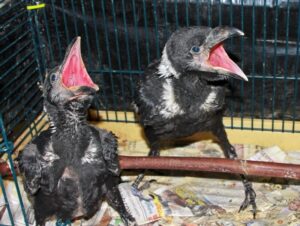
Hand-Rearing a Baby Raven and Care
Identifying Age First
Rave nestling (0-2 weeks): Needs to be fed every 20-30 minutes during the day.
Fledgling (2-4 weeks): Can eat every 1-2 hours and may begin to eat solid food.
2. Diet
Protein-rich foods: Baby crows and ravens require a high-protein diet. Suitable options include:
Cat food (wet or dry)
Dog food (wet or dry)
Hard-boiled eggs (chopped)
Cooked chicken or turkey (shredded)
Insects (mealworms, crickets)
Fruits and Vegetables: Offer small amounts of fruits (like berries) and vegetables (like peas) as they grow.
3. Feeding Technique
As for Nestlings: Use a small syringe or dropper to feed them. Gently place the food at the back of their throat. Avoid forcing food into their mouths.
For Fledglings: They may start to eat on their own. Offer food in a shallow dish or hand-feed them.
4. Hydration
You have to ensure they have access to clean water. You can moisten their food slightly, but avoid allowing them to drown.
5. Temperature
Ensure to keep the baby crow warm, especially if it’s a nestling. Use a heat source like a heating pad set on low under half of their box or enclosure.
Crows and ravens are intelligent and social birds, so providing proper care is crucial for their development. If you’re not experienced with wildlife, consider seeking help from a professional or credible breeder
Fledgling Independent
Chicks fledge at the age of about 6-8 weeks in captivity. Newly fledged chicks have a visible pink gape flange and although their feathers appear fresh, they are duller in plumage than adult birds. Baby birds stay close to their parents at this stage and do not range much further away from the nesting site. The chicks are able to eat on their own by the time they are a month-old but continue to beg and require supplemental hand-feeding until 2-3 months of age.

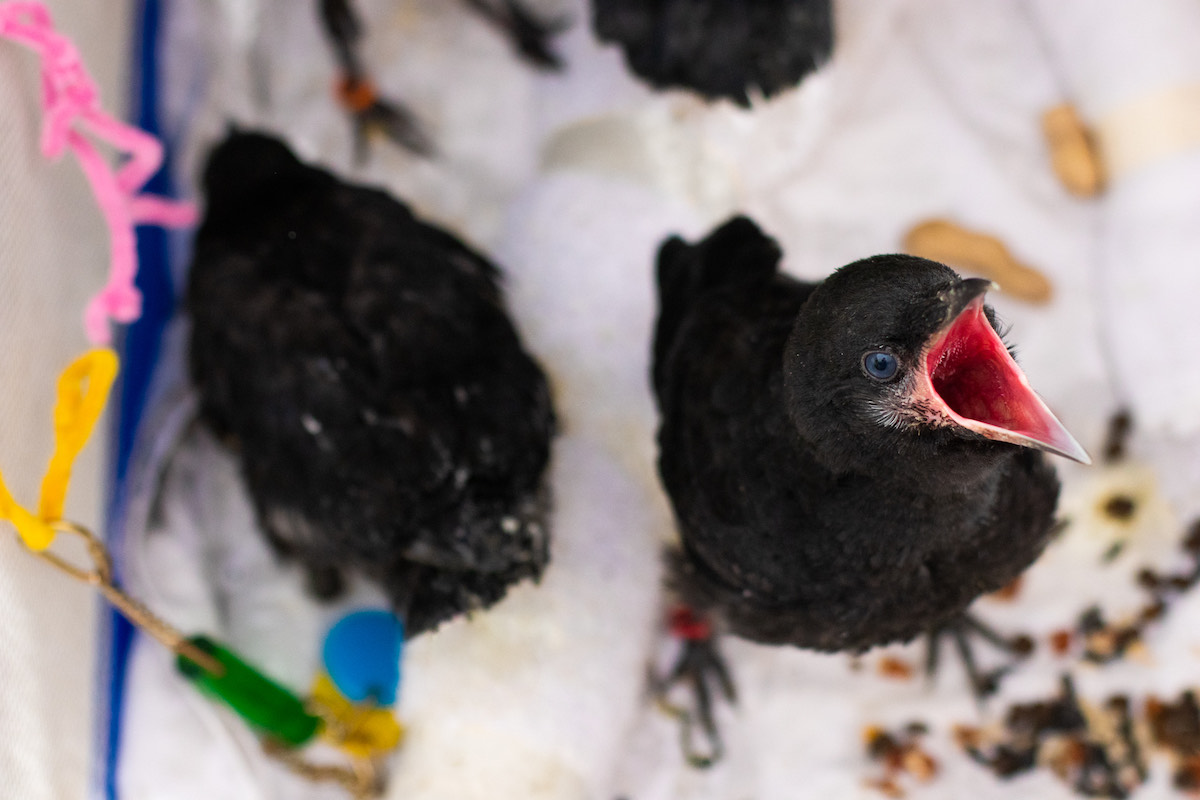
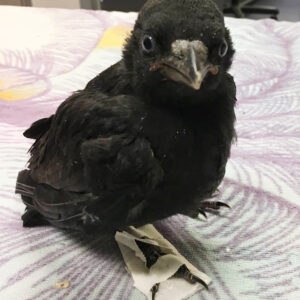
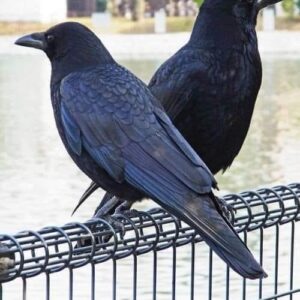
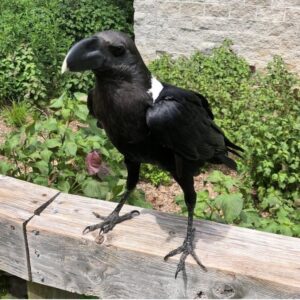
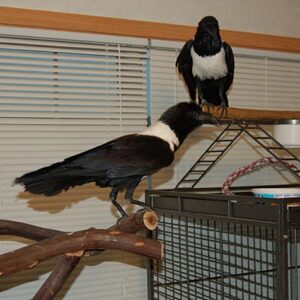
Reviews
There are no reviews yet.